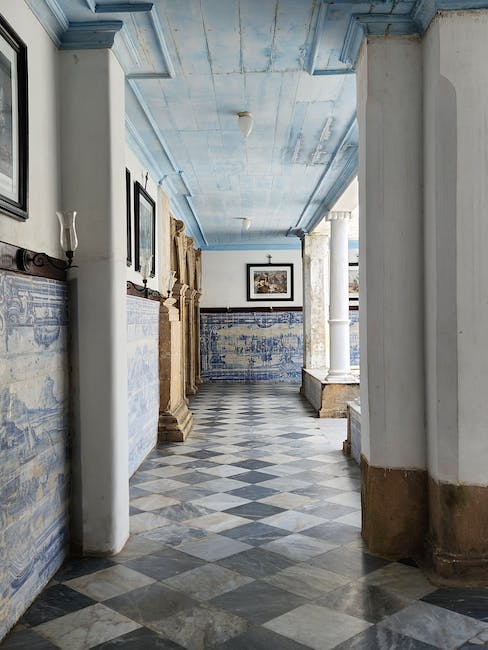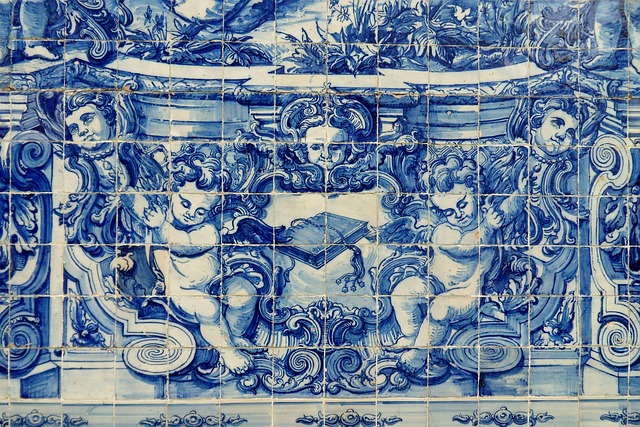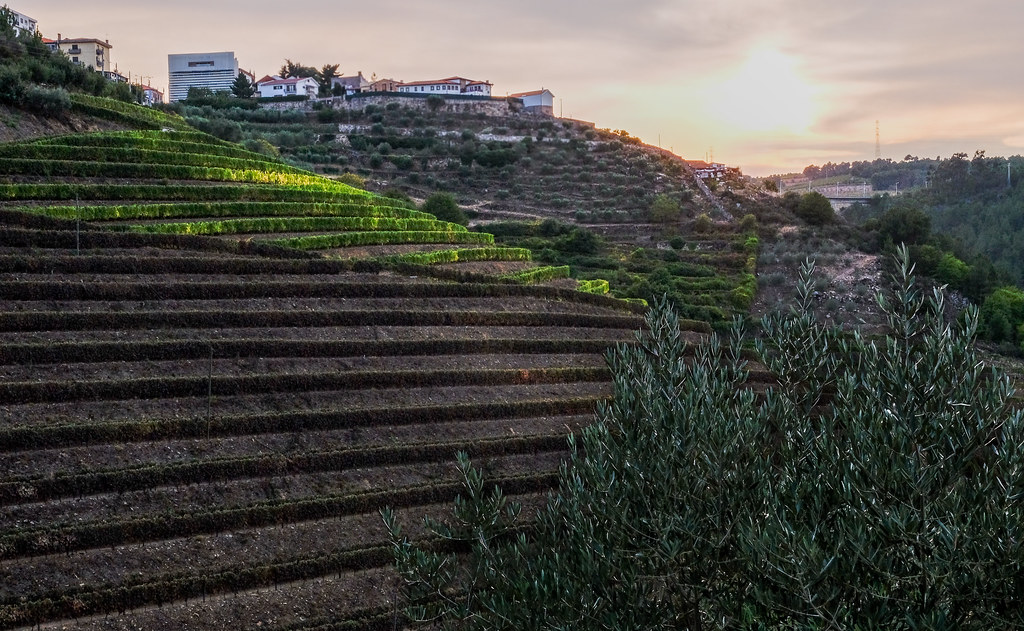In the vibrant tapestry of Portugal’s rich cultural heritage, there lies a mesmerizing art form that whispers tales of the nation’s glorious past and captures the essence of its soul. Blanketing the walls, streets, and iconic landmarks, Portugal’s Azulejos are not simply tiles, but artistic masterpieces that transcend time and weave together a thousand stories. Like an ancient mosaic, these intricate designs transport us through history, immerse us in symbolism, and invite us to uncover the captivating narratives hidden within their meticulously painted surface. Join us on a journey into the mesmerizing world of Portugal’s Azulejos, where colors, patterns, and tiny fragments of porcelain come alive, narrating the diverse tales of a nation soaked in artistic brilliance.
A Vibrant Journey through Portugal’s Azulejos: A Fusion of Art and History
The colorful tiles known as azulejos are an essential part of Portugal’s rich cultural heritage, offering a vibrant journey through the country’s history and artistic traditions. These beautiful ceramic tiles can be found adorning buildings, churches, palaces, and even train stations, adding a touch of artistry to Portugal’s architectural landscape. Walking through the streets of Lisbon or Porto, one cannot help but be captivated by the intricate patterns, bold colors, and mesmerizing stories that these azulejos convey.
Born out of Moorish influence in the 13th century, azulejos soon became a distinct feature of Portuguese culture. Originally inspired by Spanish ceramic tiles, the Portuguese artisans infused their own unique style, creating a fusion that beautifully blends art and history. Each tile tells a story, reflecting scenes from religious tales, historical events, or simply depicting everyday life in Portugal. From the grand azulejo-covered walls of the São Bento train station in Porto to the charmingly ornate facades in the Alfama district of Lisbon, these tiles are a testament to the country’s love for both art and storytelling.
- Discover the hidden gems: Portugal’s azulejos can be found not only in famous landmarks but also in hidden corners of cities and villages. Take the time to explore lesser-known neighborhoods and stumble upon stunning tiled facades that few tourists have seen.
- Feel the stories come to life: Every azulejo tells a story, and some even depict important historical events or religious scenes. Take a moment to admire the tiles and let your imagination wander as the vivid colors and intricate designs transport you to another time.
- Appreciate the craftsmanship: The art of azulejo-making requires exceptional skill and dedication. Marvel at the craftsmanship involved in creating these detailed masterpieces that have stood the test of time.
Whether you are an art enthusiast, a history buff, or simply curious about Portugal’s cultural heritage, the journey through the country’s azulejos is bound to leave you enchanted. Step into a world where art and history converge, and let the vibrant colors and captivating stories guide you on a truly remarkable adventure.

Exploring the Intricate Craftsmanship: Techniques and Materials Behind Azulejos
Step into the captivating world of azulejos, an ancient art form that has adorned buildings and landmarks in Portugal and Spain for centuries. These exquisite hand-painted ceramic tiles beautifully combine time-honored techniques with a fascinating blend of materials. By delving into the techniques and materials employed in the creation of azulejos, we gain insight into the intricate craftsmanship behind these masterpieces.
Techniques:
- Majolica Method: One of the oldest and most traditional techniques used in azulejos, this method involves painting on an unfired, glazed tile and then firing it in a kiln. The glaze acts as a protective layer, allowing the colors to retain their vibrancy and ensuring durability.
- Stencil Technique: This technique involves using stencils to create intricate patterns and designs on azulejos. Craftsmen carefully align and position the stencil, applying paint or glaze to achieve precise and repetitive patterns.
- Tile Mosaic: mosaic tile technique involves individually hand-cutting small ceramic pieces to form a larger design. These pieces are carefully arranged and fitted together, creating a visually striking composition.
Materials:
- Tin-Glazed Earthenware: The base material for azulejos, tin-glazed earthenware tiles offer a smooth, white canvas for the vibrant colors and intricate designs to come to life.
- Pigments and Glazes: Master artists use natural mineral pigments to create a wide palette of colors. These pigments are mixed with glazes, which not only enhance the color but also provide additional protection to the tile.
- Cobalt Blue: Arguably the most iconic color used in azulejos, cobalt blue has been present since the 16th century. Its deep hue, originating from imported cobalt pigments, adds richness and depth to the tile’s overall composition.

From Ancient Origins to Modern Inspirations: Tracing the Evolution of Azulejos
Azulejos, the beautiful and intricate ceramic tiles that adorn buildings in Portugal and beyond, have a rich and fascinating history that spans centuries. These tiles, whose name derives from the Arabic word “az-zulayj,” meaning small polished stone, have emerged as a quintessential element of Portuguese culture, and their allure continues to captivate admirers worldwide.
Originating in ancient Egypt, the art of tile-making gradually made its way to Portugal, becoming an integral part of the country’s architectural heritage. Over time, the use of azulejos evolved from simple geometric patterns to intricate scenes from mythology, religion, and history. One can wander through the charming streets of Lisbon or Porto and witness stunning azulejo panels that tell stories of love, war, and exploration.
- The 15th and 16th centuries witnessed a significant shift in tile-making techniques, with the introduction of glazed polychrome tiles that featured rich colors and intricate designs.
- During the 17th and 18th centuries, azulejos became increasingly popular among Portuguese nobility and clergy, adorning palaces, churches, and monasteries with exquisite tilework.
- With the advent of the 20th century, artists and architects pushed the boundaries of azulejo art, incorporating modernist and contemporary influences into the traditional craft.
Today, the legacy of azulejos lives on, inspiring artists, designers, and architects around the world. Their timeless beauty, versatility, and durability continue to captivate imaginations, bridging the gap between ancient traditions and modern design. Whether as a decorative element in public spaces or a feature in private homes, azulejos embody the rich cultural tapestry of Portugal while simultaneously adding an element of charm and sophistication to any setting.

Must-Visit Locations to Dive into the Enchanting World of Portuguese Azulejos
Embark on a mesmerizing journey through the captivating artistry of Portuguese azulejos. These hand-painted ceramic tiles carry with them centuries of history, stories, and cultural significance. Immerse yourself in the vibrant colors, intricate patterns, and the remarkable craftsmanship that adorn the walls of various locations in Portugal.
1. The National Azulejo Museum, Lisbon: Step into a treasure trove of azulejo masterpieces housed in a former 16th-century convent. From ancient panels depicting religious scenes to contemporary tilework, this museum showcases the evolution of azulejos throughout the ages. Wander along the halls to explore the different styles, techniques, and themes, gaining a deeper appreciation for the art form’s relevance in Portuguese culture.
2. Palácio da Bolsa, Porto: Marvel at the ornate azulejo-clad interior of this historical stock exchange palace, a UNESCO World Heritage site. Each stunning tableau narrates tales of Portuguese history, showcasing the rich cultural heritage of the region. The highlight is the Arab Room, where floor-to-ceiling azulejos transport you to an opulent Moorish courtyard, complete with intricate archways and stunning tile patterns.
Future Outlook
As we bid farewell to the enchanting world of Portugal’s Azulejos, it is impossible not to be captivated by the magical tales etched upon their vibrant surfaces. Through centuries of creativity and cultural exchanges, these artistic tiles have become an integral part of Portugal’s rich history and are now a cherished symbol of its artistic soul.
With each intricate design and every delicate brushstroke, Azulejos have silently narrated a thousand stories, offering us a glimpse into the past and preserving the beauty of their time. From the splendid palaces of Lisbon to the humble village chapels, these tiles have stood as timeless witnesses to a nation’s passion and resilience.
As we wander through the labyrinth of streets adorned with these mesmerizing tiles, we find ourselves transported to a world where art breathes life into architecture. The vibrant blues whisper tales of the sea, while warm yellows and greens evoke the romance of Portugal’s lush countryside. Intricate patterns dance before our eyes, telling stories of conquests, love, and traditions passed down from generation to generation.
Yet, it is not just the artistry that makes Azulejos remarkable, but also the sense of unity and pride they instill in the hearts of the Portuguese people. They are a celebration of the nation’s shared history, a testament to its resilience in the face of adversity, and a stunning reminder of the power of cultural symbols to bring people together.
As the sun sets on our journey through the world of Azulejos, we carry with us the echoes of their silent tales. They remind us that art has the ability to transcend time, language, and borders, creating a connection that unites us all. So, the next time you find yourself on Portuguese soil, take a moment to trace the intricate patterns of an Azulejo and listen closely. For within those artistic tiles lies a story waiting to be whispered, a symphony of colors longing to be heard, and a cultural heritage ready to embrace you and leave an indelible mark on your soul.

